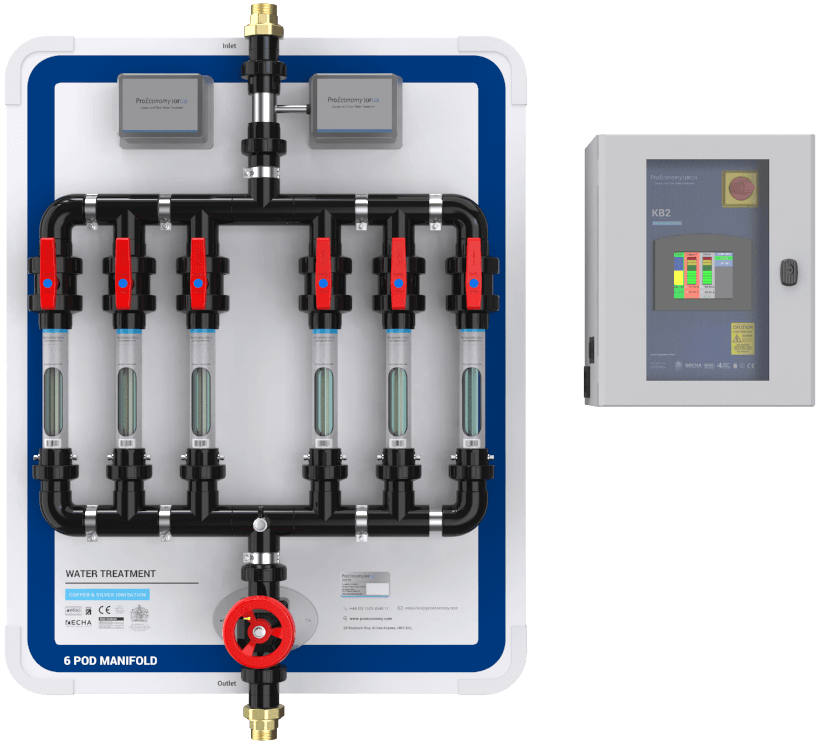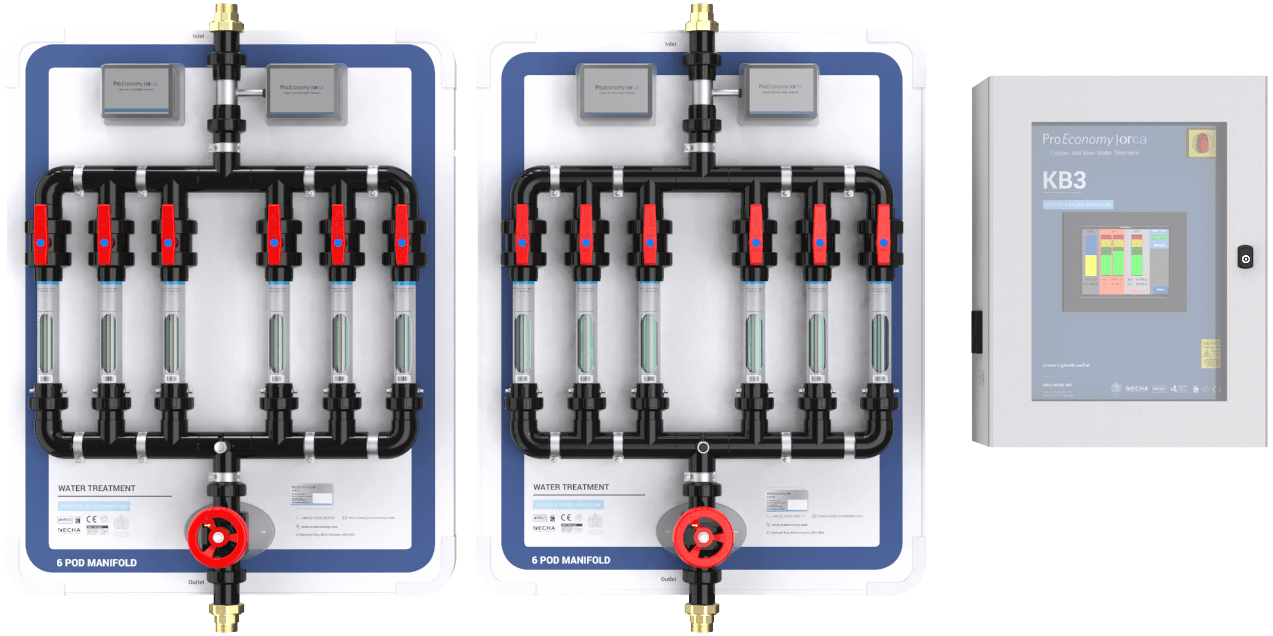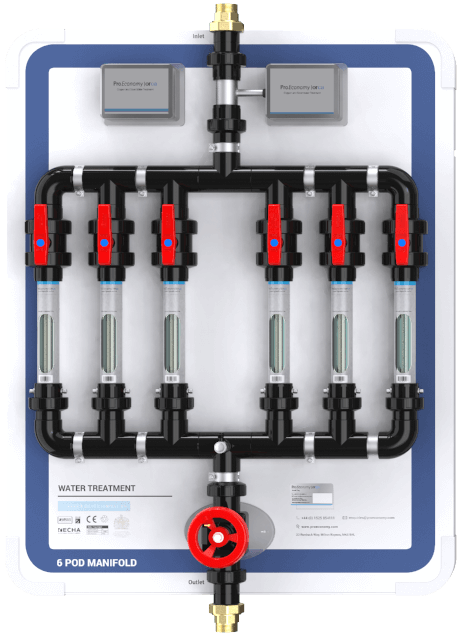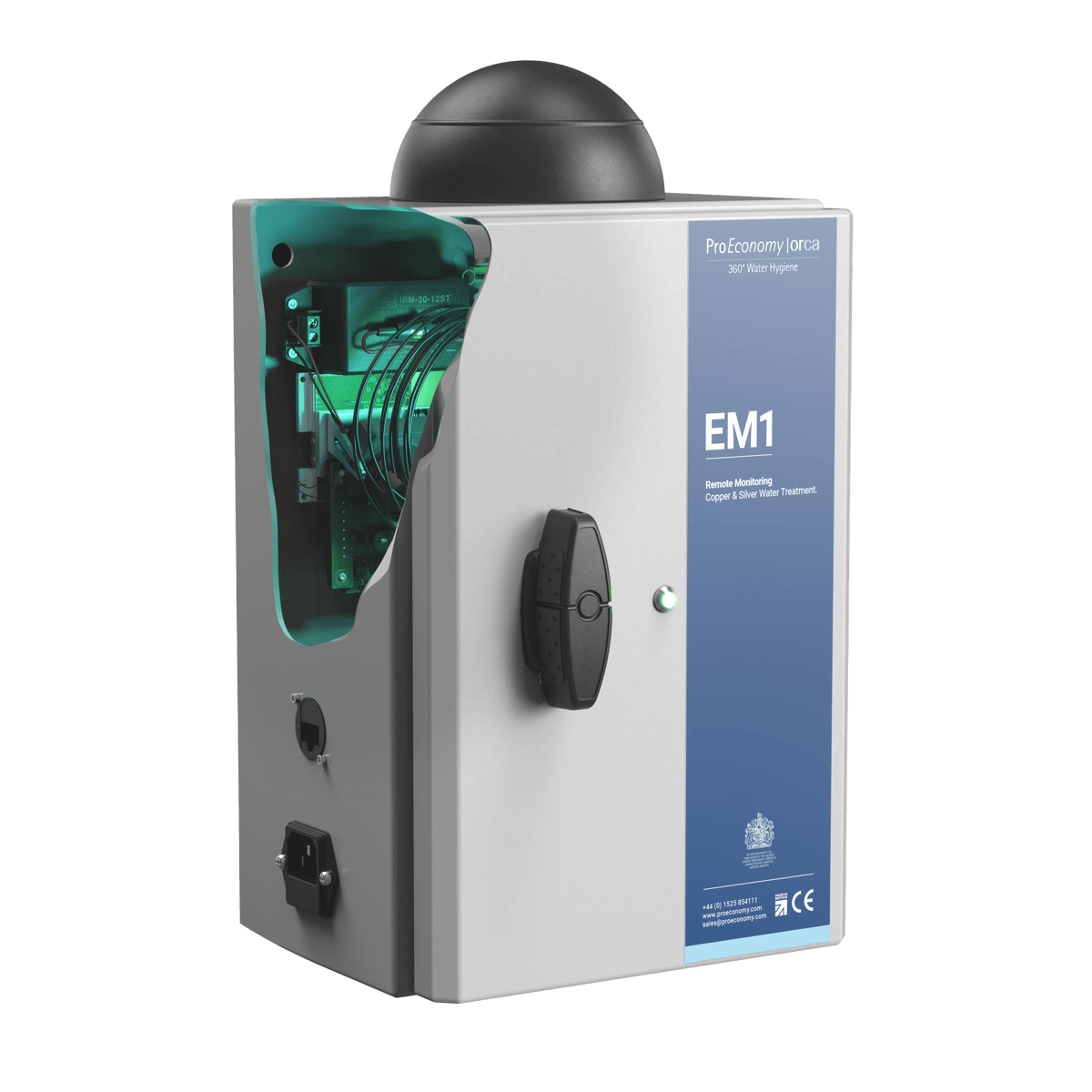Professor Hans-Curt Flemming, from the University of Duisburg-Essen, Germany, recently gave an interesting presentation entitled ‘Are my bacteria really dead?’ at the IBBS meeting (http://ibbsmeeting.org/). This suggested that bacteria, such as Legionella spp. and Pseudomonas aeruginosa, in water systems may be in a Viable But Not Culturable (VBNC) state when exposed to biocides.
Basically Professor Flemming said that disinfectants, antibiotics, metal ions, and radiation can induce a viable state in bacteria that is accompanied by a loss of culturability. He suggested that Legionella spp. as well as Pseudomonas aeruginosa can enter a ‘maintenance and repair mode’ after being attacked by biocides and can resuscitate themselves at a later time. Therefore, he inferred that although no colony forming units may have formed when water samples are cultured using standard cultural methods to see whether or not Legionella spp. or Pseudomonas aeruginosa are present, these bacteria could still regain full activity and pathogenicity and therefore cause disease.
VBNC State Of Pathogens In Water Systems With Copper Silver Ions
Would this happen though when we control these bacterial pathogens in water systems with copper and silver ions?
After analysing the studies conducted not only by the University of Duisburg-Essen but also by other universities into VBNC state organisms, it is very unlikely that this would occur.
The mechanism of how bacteria are killed by copper and silver is such that it is highly unlikely for this to happen, especially, in water systems. The killing mode of copper and silver involves an initial cell membrane compromise, followed by an accumulation of ions in the bacterial cells and subsequent damage, resulting in rapid degradation of the cell and death (Grass 2011;Yamanaka et al., 2005).
A significant amount of energy is also needed for bacteria to eliminate or inactivate the copper and silver. A total of 9 genes and 3 different types of resistance mechanisms was for instance needed by Salmonella to clear copper and silver (Silver, 1996). Also it is important to appreciate that copper and silver species are non-biodegradable non-volatile substances.
It is also easier for bacteria to eliminate and develop resistance to antibiotics or oxidising chemicals, such as chlorine, chlorine dioxide, hypochlorous acid, hydrogen peroxide, that do readily degrade, as this is less metabolically expensive to them. Therefore, developing resistance against copper and silver is also out-competed by for instance developing resistance against chlorine in the water system because this is easier (Chopra, 2007; Edward-Jones, 2009).
Legionella spp. and Pseudomonas aeruginosa in a water system will, therefore, not easily eliminate or inactivate the copper and silver species, which will continue to attack bacteria until they die.
This is why in the studies conducted in a lab to establish whether bacteria can get into a VBNC state when having been exposed to copper and silver, strong complexing agents (such as diethyldithiocarbamate (DDTC)) have to be used to neutralise the biocidal effect of copper and silver. Only after the copper and silver have no more biocidal effect it is potentially possible for bacteria to revive.
In one of the studies conducted by the University of Duisburg-Essen Pseudomonas aeruginosa was revived in the presence of the copper neutralising agent DDTC after 14 days (Dwidjosiswojo et al., 2011). How often does this occur in building water systems without the presence of neutralising agents?
Also the potential synergistic effects of copper and silver need to be considered.
Professor Flemming did point out though that the current culture method for analysing water for the presence of pathogens is still the ‘Gold Standard’.
Of course, science is evolving all the time and new techniques should always be explored but it is wrong to suggest that pathogens are not controlled in water systems treated by copper and silver ionisation on the basis of some studies done in a lab with exotic neutralising agents suggesting that they may be able to revive.
On the contrary, copper and silver ionisation have been proven to be effective against Legionella in water systems and disease not only by peer-reviewed studies of individual sites, but also by studies of multiple sites and over a long period of time (Liu et al., 1994; Miuetzner et al, 1997; Liu et al, 1998; Stout et al., 1998; Biurrun et al., 1999; Kusnetsov et al, 2001; Stout and Yu, 2003; Bedford, 2003; Chen et al., 2008; Lin et al., 2011; Bedford, 2012).
Studies have also been conducted demonstrating that Pseudomonas aeruginosa in water systems are also controlled by copper and silver ionisation (Landeen et al., 1989; Huang et al., 2008; Shih and Lin, 2010).
Open Letter by Dr B. Bedford
PhD Legionella Control
ProEconomy Ltd
Tel.: +44(0)1525 854111
E-mail: birgitta@proeconomy.com
References
Bedford, B.H.M. (2003). Toxicity of copper and silver. MSc Thesis. Cranfield University, Institute of Bioscience and Technology.
Bedford, B. (2012). Legionella control in water systems using copper and silver ion generation systems. PhD thesis. Cranfield University, UK. [Online] Available from: https://dspace.lib.cranfield.ac.uk/bitstream/1826/7983/1/Birgitta_Bedford_Thesis_2012.pdf [Accessed on September 2015].
Biurrun, A.; Caballero, L.; Pelaz, C.; Leon, E.; Gago, A. (1999). Treatment of a Legionella pneumophila colonized water distribution system using copper-silver ionization and continuous chlorination. Infect. Control. Hosp. Epidemiol. 20:426-428.
Chen, Y.S.; Lin, Y.E.; Liu, Y.C.; Huang, W.K.; Shih, H.Y.; Wann, S.R.; Lee, S.S.; Tsai, H.C.; Li, C.H.; Chao, H.L.; Ke, C.M.; Lu, H.H.; Chang, C.L. (2008). Efficacy of point-of-entry copper-silver ionisation system in eradicating Legionella pneumophila in a tropical tertiary care hospital: implications for both hospitals contaminated with Legionella in both hot and cold water. Journal of Hospital Infection. 68:152-158.
Chopra, I. (2007). The increasing use of silver-based products as antimicrobial agents: a useful development or a cause for concern? J Antimicrob Chemother. 59(4):587-90.
Dwidjosiswojo, Z.; Richard, J.; Moritz, M.M.; Dopp, E.D.; Flemming, H-C.; Wingender, J. (2011). Influence of copper ions on the viability and cytotoxicity of Pseudomonas aeruginosa under conditions relevant to drinking water environments. International Journal of Hygiene and Environmental Health. 214(6):485-492.
Edwards-Jones, V. (2009). The benefits of silver in hygiene, personal care and healthcare. Letters in Applied Microbiology. 49:147-152.
Grass, G., C. Rensing, C.;M. Solioz, M. (2011). Metallic copper as an antimicrobial surface. Appl. Environ. Microbiol. 77(5):1541-1547.
Huang H-I.; Shih, H-Y.; Lee, C-M; Yang, T.C.; Lay, J-J.; Lin, Y.E. (2008). In vitro efficacy of copper and silver ions in eradicating Pseudomonas aeruginosa, Stenotrophomonas maltophilia and Acinetobacter baumannii: Implications for on-site disinfection for hospital infection control. Wat. Res. 42:73-80.
Kusnetsov J., E. Iivanainen, E.; Elomaa, N.; Zacheus, O.; Martikainen, P.J. (2001). Copper and silver ions more effective against Legionellae then against Mycobacteria in a hospital warm water system. Wat. Res. 35(17):4217-4225.
Landeen, L.K.; Yahya, M.T.; Gerba, C.P. (1989). Efficacy of copper and silver ions and reduced levels of free chlorine in inactivation of Legionella pneumophila. Appl. Environ. Microbiol. 55:3045-3050.
Lin, Y.; Stout, J.E.; Yu, V.L. (2011). Controlling Legionella in Hospital Drinking Water: An Evidence-Based Review of Disinfection Methods. Infection Control and Hospital Epidemiology. 32(2):166-173.
Liu, Z., Stout, J.E.; Tedesco, L.; Boldin, M; Hwang, C.; Diven, W.F.; Yu, V.L. (1994). Controlled evaluation of copper-silver ionisation in eradicating Legionella from a hospital water distribution system. J. Infectious Disease. 169:919-922.
Liu, Z.; Stout, J.E.; Boldin, M.; Rugh, J.; Diven, W.F.; Yu, V.L. (1998). Intermittent use of copper-silver ionisation for Legionella control in water distribution systems: A potential option in buildings housing individuals at low risk of infection. Clinical Infectious Diseases. 26:138-140.
Miuetzner S.; Schwille, R.C.; Farley, A; Wald, R.R.; Ge, J.H.; States, S.J.; Libert, T.; Wadowsky, R.M. (1997). Efficacy of thermal treatment and copper-silver ionization for controlling Legionella pneumophila in high-volume hot water plumbing systems in hospitals. The Association for Professionals in Infection Control and Epidemiology, Inc. 17(46):813-866.
Shih H-Y.; Lin, L.E. (2010). Efficacy of Copper-Silver Ionization in Controlling Biofilm- and Plankton-Associated Waterborne Pathogens. Appl. Environ. Microbiol. 76(6):2032-2035.
Silver, S. (1996). Bacterial resistance to toxic metal ions. Gene. 179:9-19.
Stout, J.E.; Lin, Y.E.; Goetz, A.M.; Muder, R.R. (1998). Controlling Legionella in hospital water systems: Experience with the superheat-and-flush method and copper silver ionization. Infection control and Hospital Epidemiology. 19(12):911-914.
Stout J. E.;Yu, V.L. (2003). Experiences of the first 16 hospitals using copper silver ionisation for Legionella control: Implications for the valuation of other disinfection modalities. Infection Control and Hospital Epidemiology. 24(8):563-568.
Yamanaka, M., Hara, K.; Kudo, J. (2005). Bactericidal actions of a silver ion solution on Escherichia coli, studied by energy-filtering transmission electron microscopy and proteomic analysis. Appl. Environ. Microbiol. 71(11):7589-7593.




















